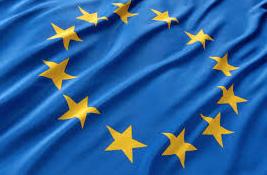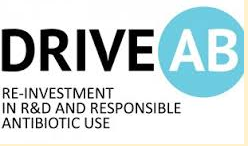
I have been saying for years that for a pull incentive to actually function as an incentive, it must be large enough to motivate investors and large Pharma to get back into antibiotic R&D. This will take a $2 (to $4) billion commitment for each priority drug approved regardless of how this goal is achieved. This could be a market entry reward, a transferable patent exclusivity reward (still my favorite), an antibiotic susceptibility bonus, a subscription payment regardless of use, etc.
 Years ago, DRIVE-AB, a European effort looking at potential incentives for antibiotic R&D, suggested that countries “pilot” various models. In fact, several countries are now doing just that. France has had a DRG carve-out for certain hospital antibiotics for years. Germany just introduced such a carve-out last year. Has this increased the market for antibiotics in either country? I don’t think so. Sweden is piloting a subscription model – but the money committed is not publicly available. The U.K. (no longer part of Europe) is also piloting a subscription model committing up to £10 million per year for up to 10 years per product. It is claimed that this will constitute the U.K.’s fair share of the overall antibiotic market in terms of their commitment to a subscription type pull incentive. Of course – that is only meaningful if many other countries join since the U.K. accounts for something like 3% of the total market. But what does “pilot” mean exactly? What is the endpoint? How will we judge success or failure? Is success defined by the sponsor somehow in terms of market increase? And how would that be defined? Is success defined by the national authority in terms of the value of therapy? What if the country has very few resistant infections like Sweden? How will it define “value?” I admit that, at the time, sitting in the DRIVE-AB conference room in the Netherlands, I did not understand this concept – and I still don’t.
Years ago, DRIVE-AB, a European effort looking at potential incentives for antibiotic R&D, suggested that countries “pilot” various models. In fact, several countries are now doing just that. France has had a DRG carve-out for certain hospital antibiotics for years. Germany just introduced such a carve-out last year. Has this increased the market for antibiotics in either country? I don’t think so. Sweden is piloting a subscription model – but the money committed is not publicly available. The U.K. (no longer part of Europe) is also piloting a subscription model committing up to £10 million per year for up to 10 years per product. It is claimed that this will constitute the U.K.’s fair share of the overall antibiotic market in terms of their commitment to a subscription type pull incentive. Of course – that is only meaningful if many other countries join since the U.K. accounts for something like 3% of the total market. But what does “pilot” mean exactly? What is the endpoint? How will we judge success or failure? Is success defined by the sponsor somehow in terms of market increase? And how would that be defined? Is success defined by the national authority in terms of the value of therapy? What if the country has very few resistant infections like Sweden? How will it define “value?” I admit that, at the time, sitting in the DRIVE-AB conference room in the Netherlands, I did not understand this concept – and I still don’t.
The other issue is that each country picks different antibiotics for its incentive. That just dilutes the market and makes no sense.
In my view, the goal of a pull incentive is to provide a significant return on investment for companies who pursue antibiotic R&D and succeed. This, in turn, will motivate investors to invest in the area. No matter how I look at this problem, it seems like the only way that such a large pull incentive will come to pass is if a region or country takes a leadership position and provides an incentive that will work globally. Once that occurs, we can work to bring other countries on board. But until then, I think we are stuck in incentive purgatory.
The table below shows the 2017 (pre-Brexit, pre-Covid) GDPs of Western countries and Europe including the U.K., Sweden, and Germany. Clearly, either Europe or the U.S. is best positioned to offer such an incentive just based on the size of their respective economies.
GDP By Country
Country/ Region..................2017 (Trillion USD)
USA......................................19.5
Europe (pre-Brexit)...............13.0
Germany.................................3.7
United Kingdom......................2.6
Sweden...................................0.5
 This brings me to a discussion of the possibility that Europe will take on this task. And every time I think about this, I go back to Flora Lewis’ book, Europe, A Tapestry of Nations. And there is no better example of the contemporary issues facing Europe’s ability to bring together its national authorities than its botched approach to providing COVID vaccine for their population. This problem has been analyzed in detail by Politico Europe and its analysis should be a wake-up call to all in Europe as to the continuing shortcomings of the alliance.
This brings me to a discussion of the possibility that Europe will take on this task. And every time I think about this, I go back to Flora Lewis’ book, Europe, A Tapestry of Nations. And there is no better example of the contemporary issues facing Europe’s ability to bring together its national authorities than its botched approach to providing COVID vaccine for their population. This problem has been analyzed in detail by Politico Europe and its analysis should be a wake-up call to all in Europe as to the continuing shortcomings of the alliance.
According to the article, Europe was late coming to the table. It even supplanted an alliance of four national authorities who had already begun negotiations for vaccines for their countries to restart negotiations for Europe. This resulted in further delay. Then it negotiated a price well below what the U.S., Israel and others were paying – which may have dropped them further down the priority list for vaccine suppliers. This is to say nothing of their clear preference for Europe-based vaccine companies like Sanofi that ultimately were unable to provide any supply in time. Then there were delays in approvals based on delayed applications to the European regulatory authority by sponsors (a frequent event since the U.S. is a bigger market). Even though Europe was quicker to approve than the U.S. once having received the submissions, the delay based on delayed submissions was still present. Then there was continued bickering among the diverse national authorities in Europe. Hungary, for example, recently approved and is administering Russia’s Sputnik and China’s Sinopharm vaccines.
The recent experience of biotech attempting to market their new antibiotics in Europe is also cause for serious concern. In at least two cases, the European regulators insisted on post-market commitments that would have been more costly than the total potential market in the region. Neither drug was ultimately marketed in the region.
All this makes me less than optimistic about Europe’s ability to get a true pull incentive for antibiotic R&D together in any reasonable time frame. So – that brings us back to the U.S. The United States, in my view, is the only country capable of pulling this off. We have the PASTEUR Act on the table – which I think would work (given clarification around a number of questions). I think it is there where we need to focus our efforts.



